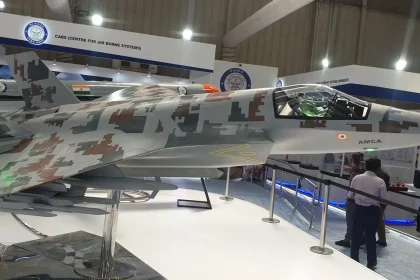Lt Gen Pratik Sharma Encourages Innovation at Northern Command Idea & Innovation Competition
Army Commander Lauds Ingenuity and Problem-Solving of Troops.
Air Marshal Manish Kumar Gupta Assumes Command of National Defence College
Distinguished IAF Fighter Pilot and Strategic Leader to Head India’s Apex Defence Institution.
Maj Gen Anindya Choudhury Assumes Command of Shahbaaz Division
New GOC Urges Troops to Uphold Values and Maintain Combat Readiness.
Adani, TATA, Kalyani, L&T Among 7 Indian Firms Bidding To Build AMCA Fighter Jet Program
India’s Private and Public Defence Firms Compete to Build Next-Gen Stealth Fighter.
General Upendra Dwivedi Reviews Operational Preparedness at Air Force Station Bhuj
COAS lauds Army-IAF synergy and operational readiness at Bhuj.
General Upendra Dwivedi Reviews Operational Preparedness of Bald Eagle Brigade
COAS lauds Bald Eagle Brigade for operational readiness and innovation in Kutch.






